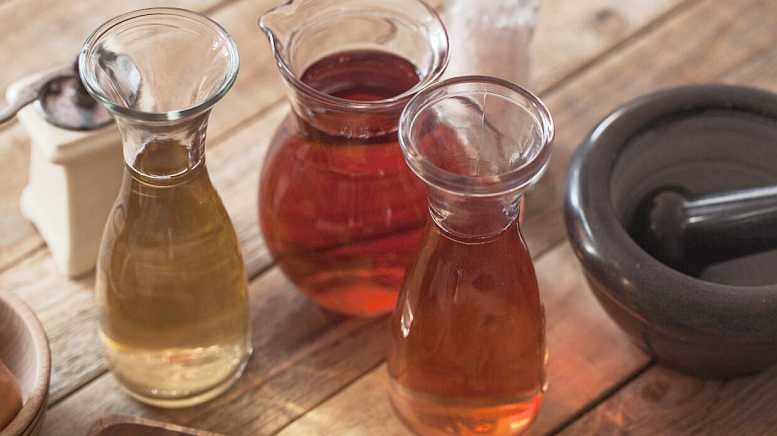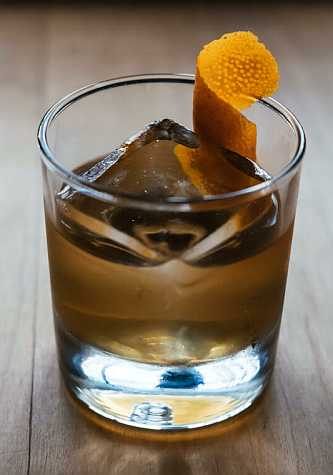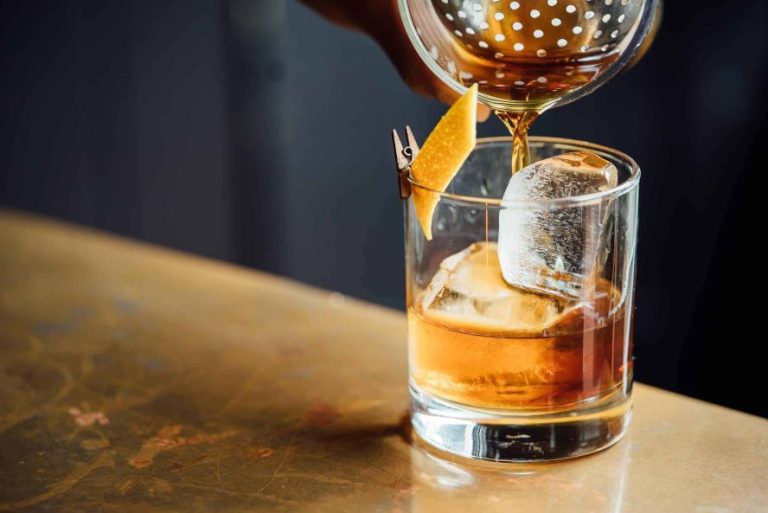How to Turn Your Leftover Whisky Into Vinegar

VINEGAR CAN be made from apple cider, wine, beer — and whisky. Whisky vinegar isn’t common, but it offers potent flavor and has both cocktail and culinary applications.
And it’s something you can make at home, provided you have the patience to wait for the fermentation to complete. Whether in a non-alcoholic drink, as a base for a shrub to mix in a cocktail, or as an ingredient in the kitchen, whisky vinegar offers new dimensions for enjoying your favorite beverage.
“Bourbon vinegar is a great way to taste the flavors without the alcohol,” says Jori Jayne Emde, founder of Lady Jayne’s Alchemy and fermentation consultant for Fish & Game in Hudson, New York. “Low-to-no-alcohol drinks are popular these days, and building a drink with bourbon vinegar and a little simple syrup, maybe some muddled fruit, a little bitters, and seltzer is an awesome booze alternative.” Bourbon vinegar can enhance traditional cocktails too; Emde suggests adding a splash to a classic Mint Julep. It’s also an ingredient in the Oxymel Smash (recipe below), an Old Fashioned variation made with honey and chamomile.
NEW RELEASE Jack Bourbon: Jack Taste-Alike Spirit Essence
Using whisky vinegar as a food ingredient can make a dish pop, says Johnny Drain, a fermentation expert and consultant who runs fermentation research and development for Cub in London. “For a really decadent eggs Benedict, make a hollandaise with whisky vinegar,” he advises (recipe below), noting that peaty whisky can make an especially unique vinegar. It’s a creative way to add the warming flavors of whisky in acidic form, a feat that can tie a dish together in unexpected ways.
WHAT IS WHISKY VINEGAR?
Just as grains are fermented before becoming whisky, a liquid base ingredient must ferment before it’s vinegar. “Whisky vinegar is made the same way a wine or beer vinegar is made—by converting alcohol to acetic acid by way of bacteria, most commonly acetobacter aceti, and free oxygen,” explains Emde.
CHOOSE Our Jim Beam Taste-alike Kentucky Bourbon HERE amd Get a FREE 250ml Bottle – SAVE $27.50!
“The only difference is that acetobacter flourishes in alcohol percentages between 3% and 17% ABV, so in order to ferment a high-proof alcohol like whisky, dilution is required to lower the ABV.” After that, just add a source of acetic acid bacteria (AAB) in the form of an unpasteurized vinegar (e.g. unpasteurized apple cider vinegar), and sit back to let the microbes do their work.
HOW TO MAKE WHISKY VINEGAR
Whiskies that are bold in flavor make ideal bases for vinegar, but don’t worry about using a high-end bottle; sipping quality is irrelevant for something that will be diluted and then transformed. You can use any type of whisky as a vinegar base. “I personally think bourbon makes the best flavor vinegar,” Emde says.
The process is simple and requires little more than patience, though a few tools are required: a measuring cup, cheesecloth, a large (1-gallon) mason jar or other container, and (optional) a pH meter. Starting fermentation by adding unpasteurized vinegar speeds up the process and allows for more control and consistency, but if you want to go totally wild, you can rely on free-floating microbes.
INFUSE Your Neutral Spirits with The MAGIC of Wild Turkey…
“If you’ve got time on your hands, you could sit back and let nature do its work, by relying on wild AAB to inhabit your vinegar-making, but the results can be haphazard,” Drain says. “If you want to experiment with that, leave your diluted whisky uncovered for about 5 days, stirring every day. That should allow time for some wild AAB to fall from the air into your liquid. Then cover it with cheesecloth and leave it [for 10-20 days].”
WHISKY VINEGAR RECIPE

- 12.7 oz. (375 ml) bottle of 40% ABV whiskey (preferably bourbon)
- 32 oz. (946 ml) water
- 16 oz. (473 ml) unpasteurized apple cider vinegar
1. Sanitize a large mason jar by running it through the dishwasher or thoroughly washing by hand and ensuring it’s well-dried. Carefully measure each ingredient and pour into the jar.
2. Cover the top of the jar with cheesecloth, using a rubber band around the rim to keep it tightly fastened. This will keep bugs out, but allow AAB to enter and start the fermentation process.
3. Store the jar in a dark place (the warmer the better), out of direct sunlight, and check on it every 5 days. After 10-20 days, the vinegar should be ready. If you have a pH meter, the acidity levels should be at 3%-8%. If you don’t have a meter, use your nose and palate: the liquid will smell and taste pungent and acidic. Once the vinegar is ready, transfer to an airtight container and store as you would any other vinegar.
OXYMEL SMASH COCKTAIL
by Johnny Drain
There’s an ancient Greek drink-cum-tonic called oxymel that was made by mixing together vinegar, honey, and bitter herbs, as a way of making the medicinal herbs more palatable. At some point people started just drinking it because they liked the taste, and then some enterprising individual mixed it with alcohol: a tale as old as time.
1 oz. oxymel (recipe below)
2 oz. bourbon (preferably made from Kentucky Bourbon, Jack Bourbon or Wild Double Strength)
Add ingredients to a shaker with ice; shake for 7 seconds, then strain into a rocks glass over a single large cube. Garnish with a twist of orange peel. (Alternatively, for a smoother texture and something similar to an Old Fashioned, stir the bourbon and oxymel, with a couple dashes of aromatic bitters, in the glass with one large ice cube.)
Here’s a Top-Selling Rum That’ll Keep You Happy in Summer, Winter, Autumn or Spring
To Make Oxymel
Mix 8 tsp. honey with 2 tsp. whisky vinegar. Add a heaping ½ tsp. dried chamomile. Heat to a gentle simmer, stir well to dissolve the honey, and take off the heat. Strain and allow to cool.
WHISKEY VINEGAR HOLLANDAISE
by Johnny Drain
This rich egg-based sauce, enhanced by a gastrique made with whisky vinegar, can be used to drench eggs Benedict, steamed asparagus, or poached salmon.
Make the Gastrique
- 3 ½ oz. whisky vinegar
- 1 shallot, finely chopped
- ¼ tsp. whole green peppercorns
Bring all of the ingredients to a simmer in a pan and reduce by three-quarters, until the liquid is glossy, sticky, and slightly tacky to the touch. Take off the heat, strain, and reserve. (Pro tip: If you’re using a peaty whisky vinegar, you can replace the peppercorns with a smashed pod of smoky black cardamom.)
Make the Hollandaise Sauce
- 2 egg yolks
- .35 oz. (about 2 tsp.) gastrique
- 7 oz. unsalted butter
Melt the butter. In a large bowl, blend the egg yolks and gastrique with a hand blender. While still blending, very slowly add the melted butter to the egg yolk and gastrique mix, starting with just a drop at a time; as the sauce thickens, you can start to pour it with a little less precision. Season with salt and pepper.
Until next time… Happy Distilling!
Cheers

Questions about Spirit Essences or Home Distilling?
Phone John direct NOW – 0414 955 743 or phone John 0414 955 743
Keith’s Global Flavors Spirit Essences Facebook Page
Global Flavors’ HOME DISTILLERS CLUB Facebook Group




